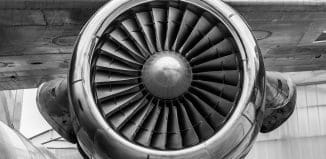Drones Will Improve Bridge Inspection
This post is also available in:  עברית (Hebrew)
עברית (Hebrew)
Bridges in poor condition may endanger transportation and risk human lives. Traditionally, bridges have been inspected manually for defects which bridge examiners taking notes regarding the amount of damage and the locations where there may be cracks, spalls and delaminations. Bridge examinations need to be extremely thorough, with inspectors documenting all potentially compromised elements. However, inspection methods are not always efficient, especially in cases where the accessibility is limited.
To address the critical need to manage aging infrastructure in the U.S., researchers are turning to robotic drones. Researchers from the Michigan Tech Research Institute are using drones to view difficult-to-reach locations, compile large sets of data and explore possible defects using a 3D application.
Research scientist Colin Brooks said: “An important component of mobility is being able to understand whether or not the transportation system you’re looking at can effectively move goods and people based on the condition of the infrastructure.”
The new mobile application shows examiners a 3D representation of the targeted bridge, saving examiners time by enabling them to record location-specific information on problem areas. They then can upload field data and notes right into a bridge management system.
Using drones, along with the app, will allow officials to get a better handle on the conditions of a bridge. “We can do things from the air, from vehicles, we work with the Great Lakes Research Center to do surface water and underwater surveys, we do 3D sensing,” Brooks said. “It all depends on what the phenomenon is that you’re trying to understand.”
According to rdmag.com, various drones were used by the researchers to conduct inspections, including a hexacopter and quadcopter. These unmanned vehicles fly in 20-minute increments within line of sight below 400 feet. They are outfitted with photogrammetry and thermal imagery gear that detects nuances beyond what the human eye can pick up.
Deciphering the data with confidence remains the biggest challenge. “We focused a lot on being able to create objective and repeatable data to help assess bridges,” Brooks said, adding that the economics of implementing new tech is also important. “Drone surveys don’t have to be expensive. We run drones that cost less than $10,000 to do nearly all of our work.”
The researchers also need to ensure that the drones, remote sensing and applications are both verified and cost effective. “New sensors, new platforms seem to come online several times a year — so how do we take advantage of that rapid innovation and hardware and make them available on a practical basis?” Brooks said. “Somebody has to do the testing to make sure the tech collects what’s needed and that’s part of the niche we fill.”
The potential needs are vast, only in the US more than 54,000 of the 612,677 bridges have at least one key element that is in poor or worse condition, according to a 2018 bridge deficiency report conducted by the Federal Highway Administration.






























